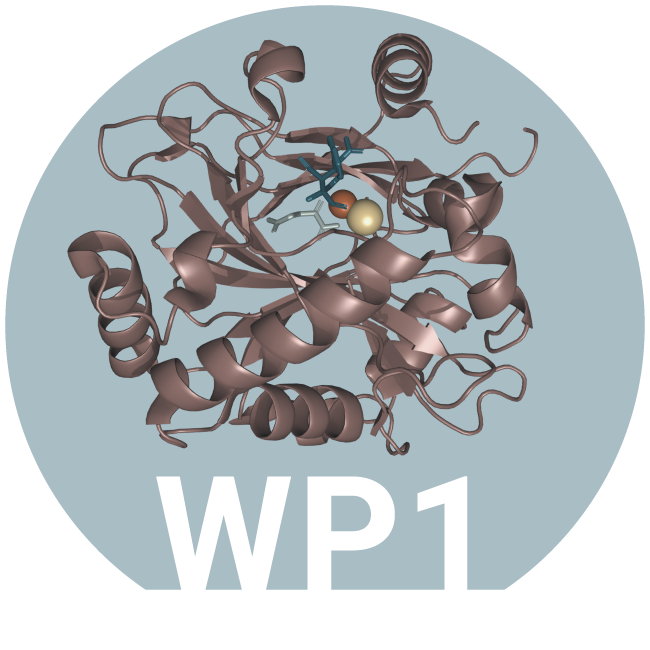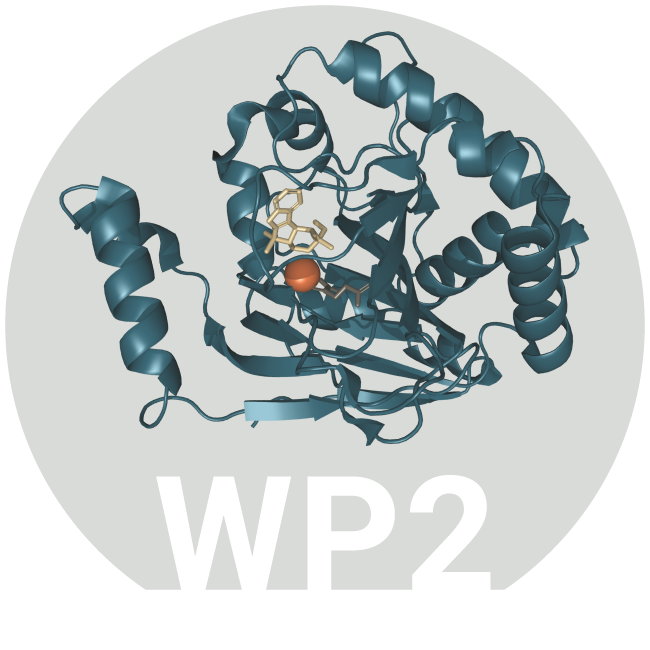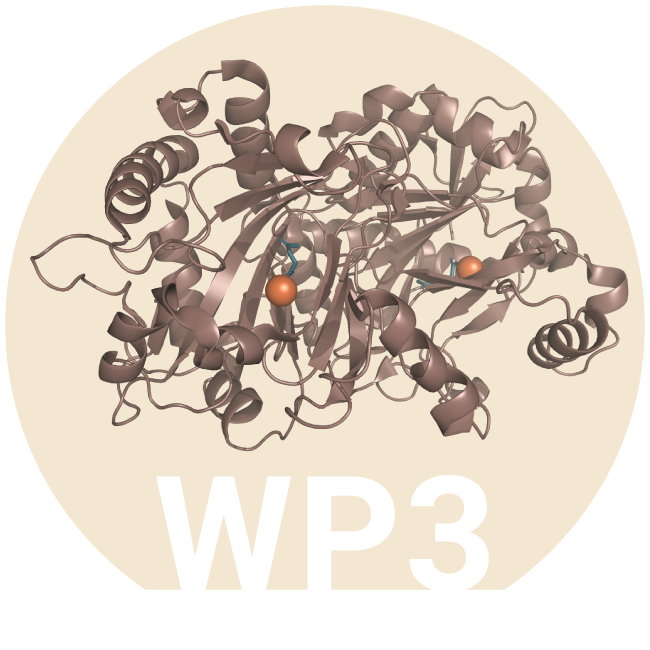
WP1
Enzyme discovery and characterization
of novel halogenases
WP1 expands the scope of available α-ketoglutarate-dependent halogenases (α-KDHs) and flavin-dependent halogenases (FDHs), providing access to valuable halogenated APIs via native and engineered HALs, and enzymes with unique profiles from extreme environments.
Key Objectives:
- Expanding the scope of α-KDHs by genome mining;
- Exploiting promiscuous activities of α-KDHs toward molecule functionalisation;
- Computational prediction of unexplored FDHs towards halogenations;
- Metagenomic prospecting and development of tailor-made α-KDHs and FDHs.

WP2
Structure elucidation and AI-based enzyme
engineering towards novel reactivities
The research in WP2 will elucidate structural and mechanistic features of halogenases to be integrated into AI-guided engineering efforts to induce or enhance promiscuous activities of natural and de novo halogenases towards selective halogenations
Key Objectives:
- De novo design and engineering of FDHs;
- Elucidation of crystal and AI-derived structures and modelling of novel FDHs and α-KDHs to extend mechanistic knowledge;
- AI-guided engineering and directed evolution of tailored biocatalysts to induce/enhance promiscuous halogenation activities;
- Application of AI/ML computational tools to predict HAL reactivity.

WP3
Process intensification and biocatalytic
applications
WP3 addresses the challenge of implementing halogenases in biocatalytic cascades to access multifunctional pharmaceutical precursors and to demonstrate the potential of newly developed biocatalysts.
Key Objectives:
- Development of cellular factories towards halogenated products with further diversification;
- Development of biocatalytic cascades integrating α-KDHs for the production of functionalized products;
- Intensifying biocatalytic cascades via continuous flow processes;
- Integrating α-KDHs into chemoenzymatic cascades via flow biocatalysis.